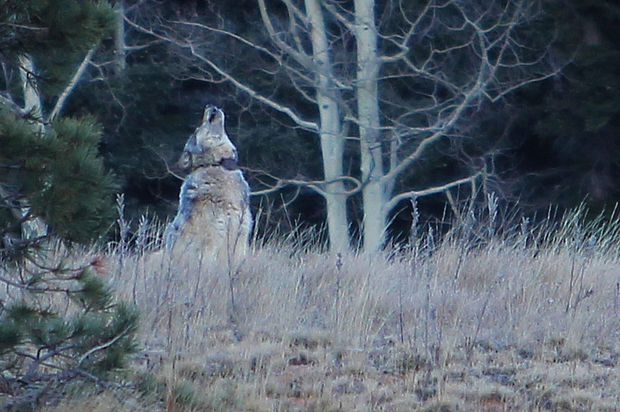In The News: Tests will tell if animal is a wolf
 An animal resembling a gray wolf has been spotted roaming the far reaches of northern Arizona, and tests are planned to determine exactly what it is, according to the U.S. Fish and Wildlife Service.
An animal resembling a gray wolf has been spotted roaming the far reaches of northern Arizona, and tests are planned to determine exactly what it is, according to the U.S. Fish and Wildlife Service.
The animal has been seen and photographed in Kaibab National Forest north of Grand Canyon National Park with a collar similar to those used in a wolf recovery effort in the Northern Rockies.
The animal could be from that population of about 1,700 or a wolf-dog hybrid, said agency spokesman Jeff Humphrey. Officials will test its feces to determine further details.
Humphrey said the animal should be treated as endangered until more is known about it.
“Our immediate concern is the welfare of this animal,” he said.
A group of fewer than 100 endangered Mexican gray wolves lives in portions of eastern Arizona and western New Mexico, but Humphrey said the animal does not appear to be from the Southwest population. Wolves in the Northern Rockies have fuller bodies and less pointed ears than Mexican gray wolves
This article was published in the Albuquerque Journal. Articles on the same topic appeared recently in multiple news sources.
*******************************************************************************************************
Please thank the newspapers for covering this important news about Mexican wolves and express your support for wolf recovery with a letter to the editor. One short letter from you can influence decision-makers and thousands of your fellow citizens. Tips and talking points are below, but please write in your own words, from your own experience. Don’t try to include all the talking points in your letter.
Letter to the Editor Talking Points:
- Wolves were once native to this area but were extirpated by a federal extermination program in the late 1800’s and early 1900’s. News of a possible wolf in this area after a more than 70 year absence is historic and cause for celebration.
- Gray wolves are currently federally protected under the Endangered Species Act in Arizona. If this is a wolf, its protection should be the highest priority.
- If confirmed, this is an example of what wolf recovery should look like: animals naturally dispersing to their historic habitat. Science has confirmed that there is great habitat in the Grand Canyon ecoregion, and a wolf’s presence on the north rim would be proof that the science is right.
- This reinforces how critical continued federal protections for gray wolves are right now. Because gray wolves are still federally protected in the majority of the continental USA, wolves would be able to safely migrate through one if not two states (CO and UT) to occupy some of their best available historic habitat.
- A national wolf delisting will remove these protections across most of the continental United States, giving states the authority to manage them as they see fit. With patchwork state protection for the species at best, and overt persecution of wolves at worst, continued wolf dispersal into unoccupied habitat would be dramatically hampered if not blocked altogether with the end of federal protections.
- Wolves from the north and south historically met, interbred and thrived in the Southern Rockies. Today there is an abundance of suitable wolf habitat in southern Wyoming, Utah, Colorado, New Mexico and Arizona.
Make sure you:
- Thank the paper for publishing the article.
- Keep your letter brief, no more than 150 words.
- Make your letter personal. Don’t be afraid to use humor or personal stories. Include something about who you are and why you care: E.g. “I am a mother, outdoors person, teacher, business owner, scientific, religious, etc.”
- Provide your name, address, phone number and address. The paper won’t publish these, but they want to know you are who you say you are.
Submit your letters here:
Santa Fe New Mexican
Arizona Daily Sun
Arizona Republic
Salt Lake Tribune
Photo by AZ Game and Fish Department
*******************************************************************************************************************************
Click here to join our email list for Mexican gray wolf updates and action alerts.
Visit us on Facebook here.
Donate to support our work for Mexican gray wolf recovery here.



